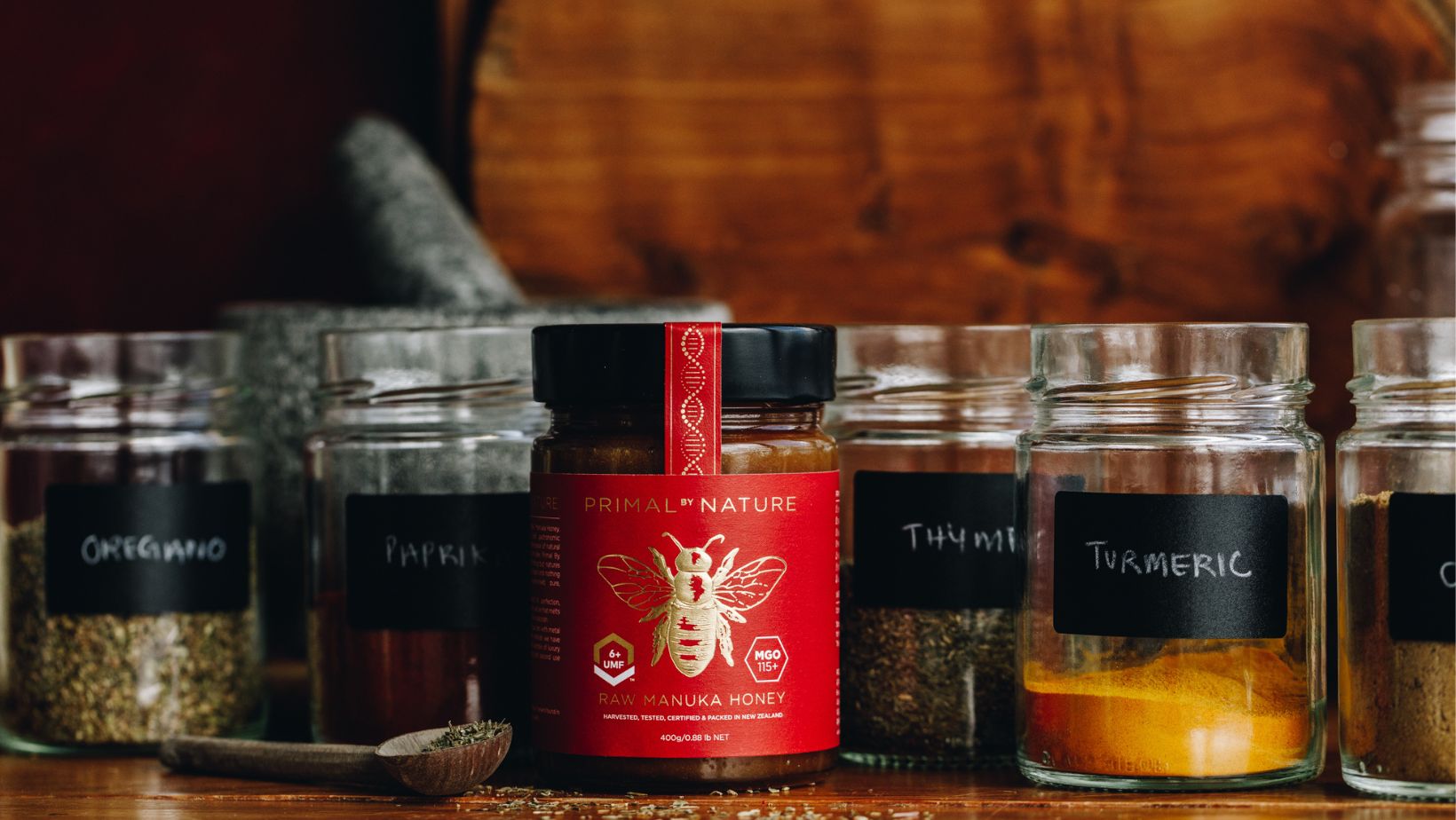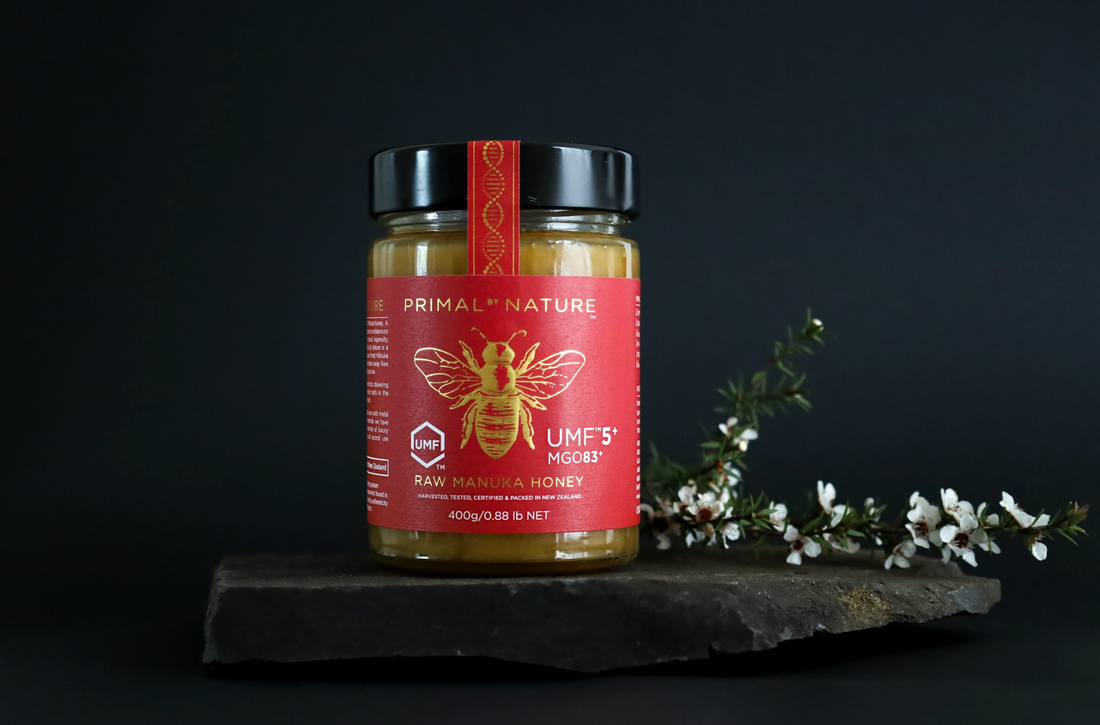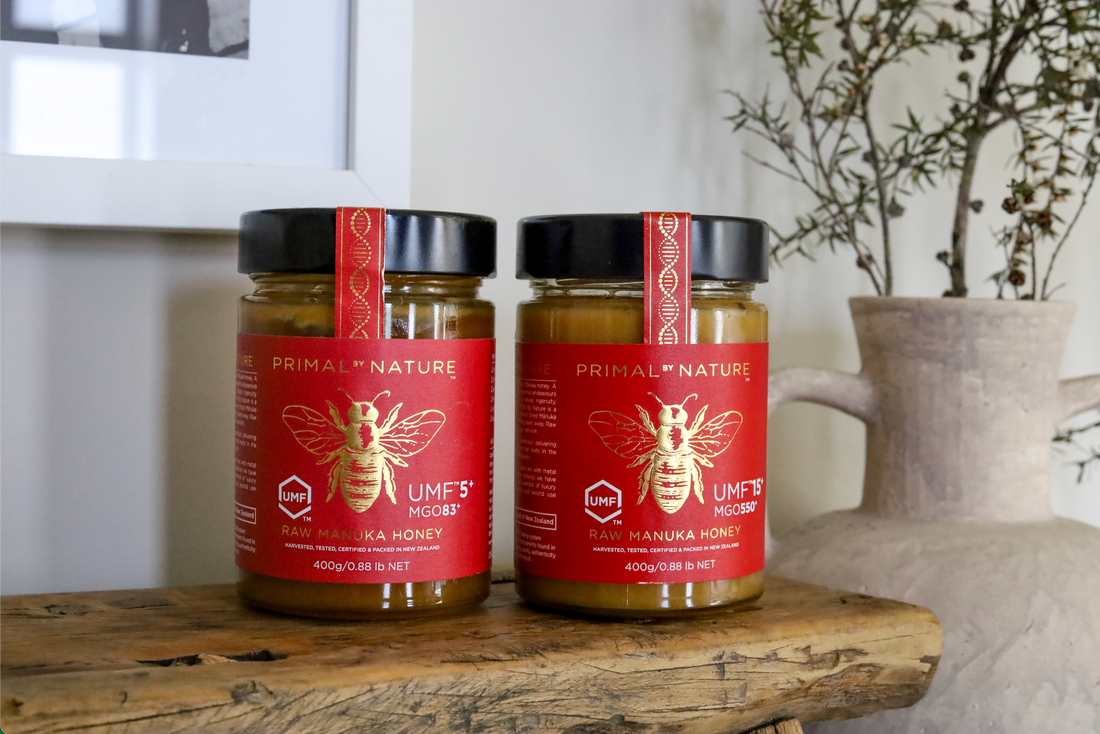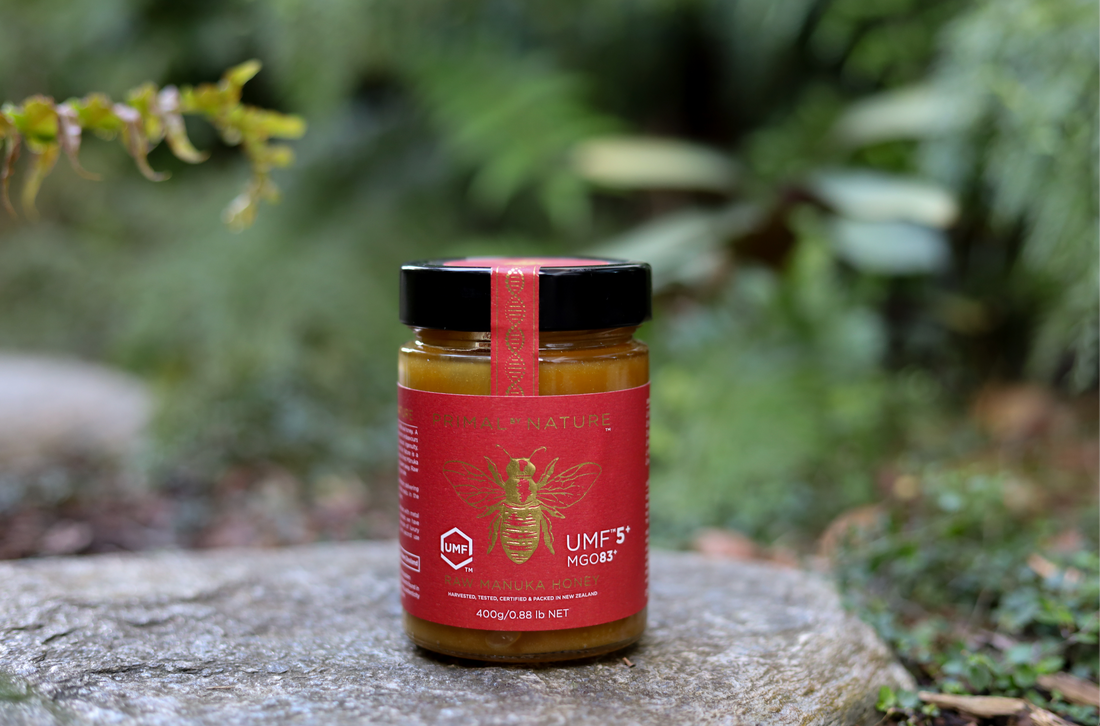Monofloral Mānuka honey is a type of honey that is produced by bees that feed on the nectar of the Mānuka bush, which is native to New Zealand. This unique type of honey has become increasingly popular in recent years due to its rarity, delectable taste and unique ingredients. Here's what you need to know about Mānuka honey and how it should be used.
What Does Primal by Nature Mānuka Honey Taste Like?
Mānuka honey has a unique, complex flavour profile. It is often described as having a slightly medicinal, earthy, and slightly bitter taste, along with hints of nutty notes. The flavour can also vary depending on the source of the nectar used to produce the honey. At Primal by Nature, we pride ourselves on producing Mānuka honey from a single source in some of the most remote locations across New Zealand.
Some customers describe the taste as being similar to conventional honey, with a stronger, more pungent flavour. Ultimately, the taste of Mānuka honey can vary from person to person, so it's best to try it for yourself to experience a drop of primal sweetness.
For more information, please read ‘What Does Pure Mānuka Honey Look, Taste and Smell Like?’
What Makes Monofloral Mānuka Honey Different?
Mānuka honey is different from traditional honey in several ways. First, it contains high levels of methylglyoxal (MGO), which is a naturally occurring compound found in Mānuka nectar. MGO is present in many honey varieties; however, scientists have measured levels of this bioactive ingredient to be exponentially higher in monofloral Mānuka honey.
Second, Mānuka honey can be measured via a unique validation method known as the Unique Mānuka Factor (UMF). This rating system measures four specific factors of Mānuka honey and awards grades between UMF 5+ to UMF 32+. The higher the UMF rating, the greater the concentration of unique properties.
These properties include:
- Leptosperin - Mānuka DNA marker
- Dihydroxyacetone (DHA) - Biochemical found in Mānuka nectar
- Methylglyoxal (MGO) - Derived from DHA and supposedly may have antibacterial properties
- Hydroxymethylfurfural (HMF) - a heat-sensitive chemical, determines the freshness
How To Use Monofloral Mānuka Honey:
Genuine Mānuka honey can be used as a natural sweetener in place of sugar or other artificial sweeteners. It has a unique, slightly bitter taste that is perfect for use in tea, coffee, or smoothies.
Topically: Mānuka honey can be applied directly to the skin to help keep wounds moist. Simply apply a small amount of honey to the affected area and cover it with a bandage.
Orally: Mānuka honey can be taken orally to help support digestive health and boost the immune system. Simply add a spoonful of honey to a glass of warm water or tea.
Monofloral Mānuka honey is the rarest honey produced in New Zealand and has gained several uses outside of being enjoyed by the spoonful.
To get the most out of raw Mānuka honey, be sure to look for a high UMF rating to ensure that you're getting the most premium variation. Primal by Nature offers the world the first comprehensive line of pure Mānuka honey products to come in a reusable glass jar.
Why Is Mānuka Honey Considered To Be Rare?
There are a few factors at play as to why genuine Mānuka honey is considered rare:
Mānuka honey is produced exclusively in New Zealand from the nectar of the Mānuka bush (Leptospermum scoparium). The Mānuka bush only grows in certain parts of New Zealand and its blooming period is relatively short, which limits the amount of honey that can be produced each year.
Mānuka honey has gained popularity in recent years due to its unique antibacterial properties. As demand has risen, so has the price, making it a premium product.
Producing high-quality Mānuka honey requires strict quality control measures to ensure that the final product meets the standards for purity, potency, and potency. This process is time-consuming and adds to the cost of producing Mānuka honey.
Due to the high demand and price of Mānuka honey, there are many counterfeit products on the market. Authentic Mānuka honey can only be produced in New Zealand, so consumers must be cautious when purchasing to ensure that they are getting a genuine product.
Primal by Nature - Sustainably Providing 100% Pure New Zealand Mānuka Honey
Primal by Nature can deliver Mānuka honey from the rawest and primal regions in some of the most remote New Zealand locations. We are your one-stop shop for a sustainable and natural solution. Our Mānuka honey comes in a range of UMF™ strengths.
All Primal by Nature Mānuka honey arrives at your door in recyclable glass jars regardless of the level of MGO or UMF™. We believe that our pure New Zealand Mānuka honey must be the best and should be available to consumers in the same eco-friendly packaging.
Primal by Nature eliminates the confusion surrounding Mānuka honey UMF™ grading systems and standards. As a result, you will be made aware of the different grades and be confident in buying a product that reflects an environmentally conscious brand.
Taking Mānuka honey to the next level, every Primal by Nature glass jar contains a potent primal burst of nature. To taste Mānuka honey of this stature is to embrace nature itself. So take a look at our extensive selection of Mānuka honey products and become one with nature.





